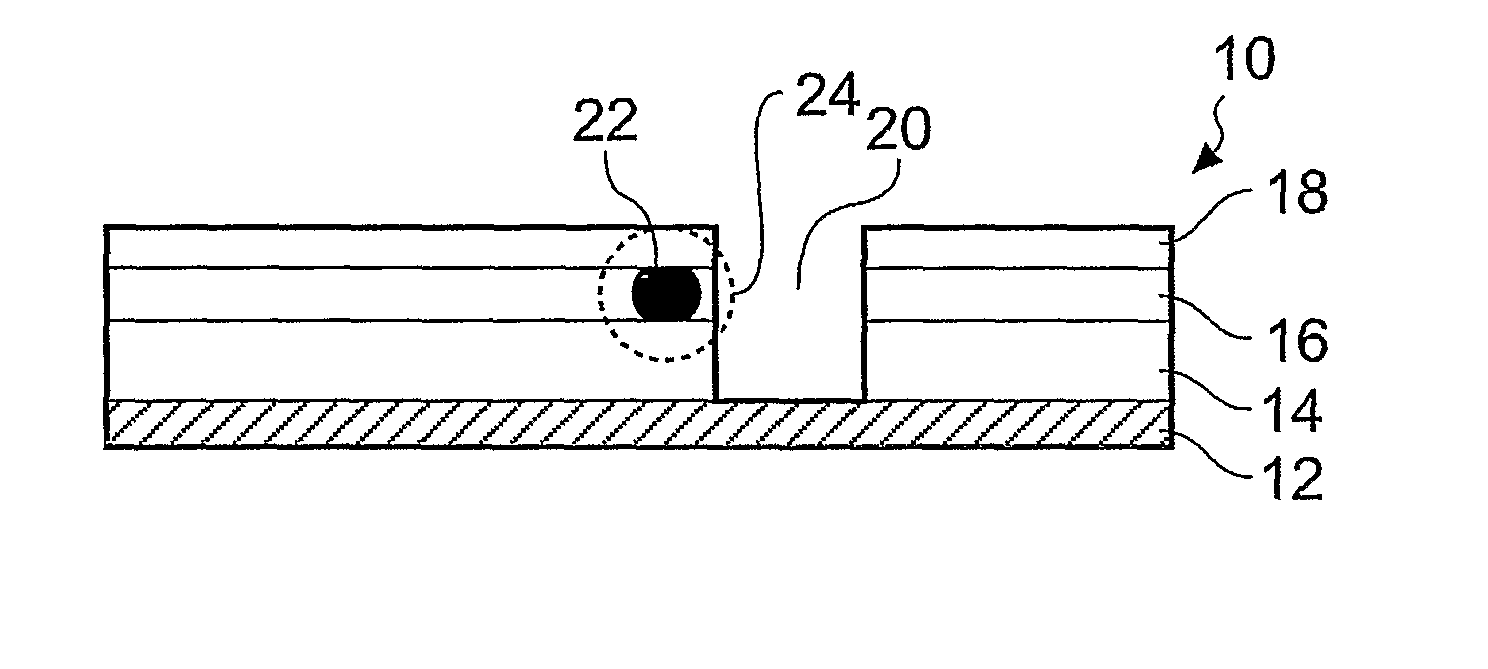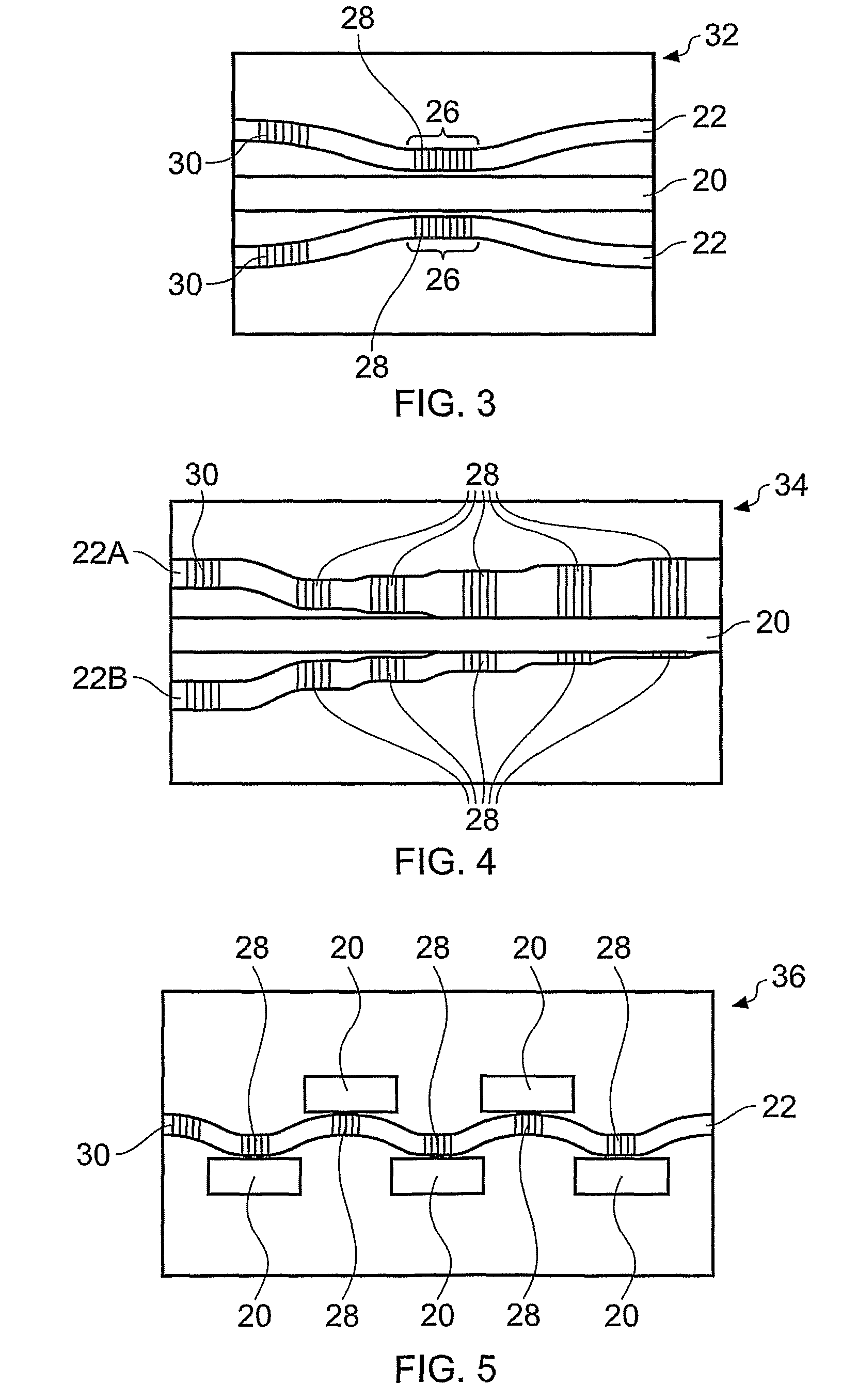Method of fabricating waveguide devices which use evanescent coupling between waveguides and grooves
a technology of evanescent coupling and waveguide, which is applied in the direction of lasers, application, laser construction details, etc., can solve the problems of waste of laborious waveguide making, and achieve the effects of smooth proximity with the groove, reduced labor intensity, and reduced labor intensity
- Summary
- Abstract
- Description
- Claims
- Application Information
AI Technical Summary
Benefits of technology
Problems solved by technology
Method used
Image
Examples
Embodiment Construction
[0040]Conventionally, optical devices that exploit the effect of a sample of material on the evanescent optical field of light propagating in a waveguide comprise a window etched into the top surface of a planar substrate containing a channel waveguide. The window is positioned over the waveguide and extends down to or into the core layer of the substrate so that the evanescent field can extend into material contained in the window. The presence of a material in the window modifies the optical field. A material placed in the window can thereby be interrogated if the modification is measured; the amount of modification is representative of a property of the material which can hence be determined. A device operated in this way is therefore a sensor. Alternatively, the material properties can be used to deliberately modify the light in a desired manner, so that the device operates as a modulator. In all cases, however, the geometry of the waveguide and window combination is orthogonal ...
PUM
 Login to View More
Login to View More Abstract
Description
Claims
Application Information
 Login to View More
Login to View More - R&D
- Intellectual Property
- Life Sciences
- Materials
- Tech Scout
- Unparalleled Data Quality
- Higher Quality Content
- 60% Fewer Hallucinations
Browse by: Latest US Patents, China's latest patents, Technical Efficacy Thesaurus, Application Domain, Technology Topic, Popular Technical Reports.
© 2025 PatSnap. All rights reserved.Legal|Privacy policy|Modern Slavery Act Transparency Statement|Sitemap|About US| Contact US: help@patsnap.com



